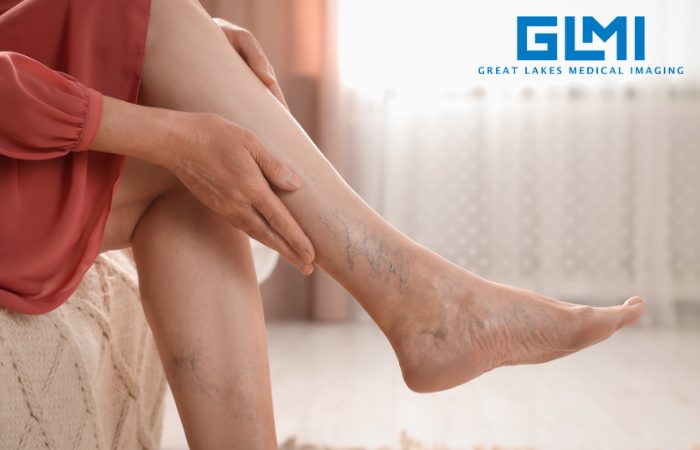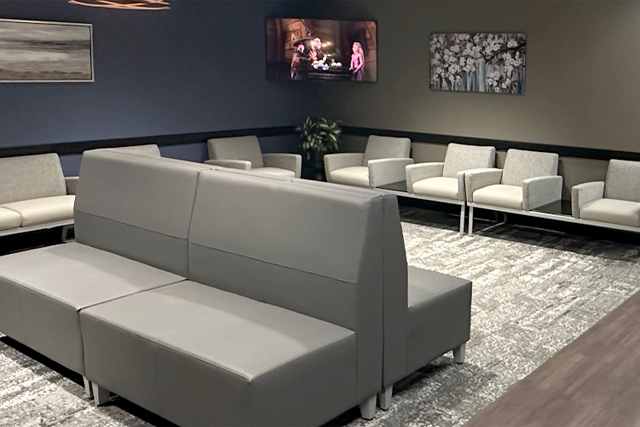Our Blog
Understanding the Link Between Varicose Veins and Deep Vein Thrombosis

Varicose veins and deep vein thrombosis (DVT) are both conditions that affect the veins, but they are distinct in their causes, symptoms, and implications. Understanding the link between these two conditions is essential for effective prevention, diagnosis, and treatment. At Great Lakes Medical Imaging (GLMI), we strive to provide comprehensive care and information to help our patients manage their venous health. In this blog, we’ll explore the relationship between varicose veins and DVT, highlighting the importance of awareness and proactive management.
What Are Varicose Veins?
Definition and Causes
Varicose veins are enlarged, twisted veins that usually appear in the legs and feet. They occur when the valves in the veins that regulate blood flow become weak or damaged, causing blood to pool and the veins to swell. Factors contributing to varicose veins include:
- Genetics: A family history of varicose veins increases your risk.
- Age: Aging causes wear and tear on vein valves.
- Gender: Women are more likely to develop varicose veins due to hormonal changes.
- Pregnancy: Increased blood volume and hormonal changes during pregnancy can lead to varicose veins.
- Obesity: Excess weight puts additional pressure on veins.
- Prolonged Standing or Sitting: Occupations that involve long periods of standing or sitting can contribute to varicose veins.
Symptoms
Common symptoms of varicose veins include:
- Swollen, bulging veins
- Aching or heavy feeling in the legs
- Throbbing or cramping in the legs
- Itching around the veins
- Skin discoloration around the affected area
What Is Deep Vein Thrombosis (DVT)?
Definition and Causes
Deep vein thrombosis (DVT) is a condition where a blood clot forms in a deep vein, typically in the legs. DVT is a serious condition because the blood clot can travel through the bloodstream and cause a pulmonary embolism (PE) if it reaches the lungs. Factors that increase the risk of DVT include:
- Prolonged Immobility: Long periods of sitting or bed rest can slow blood flow and lead to clot formation.
- Surgery or Injury: These can damage veins and increase the risk of clotting.
- Certain Medical Conditions: Conditions that affect blood clotting can increase the risk of DVT.
- Pregnancy: Increased pressure in the veins during pregnancy can contribute to DVT.
- Birth Control Pills or Hormone Replacement Therapy: These can increase the risk of blood clots.
- Obesity: Excess weight increases pressure on the veins.
- Smoking: Smoking affects blood clotting and circulation.
Symptoms
DVT symptoms can vary, but common signs include:
- Swelling in one leg
- Pain or tenderness in the leg, often starting in the calf
- Red or discolored skin on the leg
- A feeling of warmth in the affected leg
The Link Between Varicose Veins and DVT
Shared Risk Factors
Varicose veins and DVT share several risk factors, including prolonged immobility, obesity, pregnancy, and certain medical conditions. While varicose veins themselves are not typically dangerous, their presence can indicate underlying venous insufficiency, which can increase the risk of developing DVT.
Increased Risk of Complications
Individuals with varicose veins may be at a higher risk of developing superficial thrombophlebitis, a condition where a blood clot forms in a superficial vein. While superficial thrombophlebitis is less dangerous than DVT, it can increase the risk of DVT if left untreated. Therefore, it is crucial to monitor and manage varicose veins effectively to reduce the risk of complications.
Prevention and Management
Preventing Varicose Veins and DVT
- Stay Active: Regular exercise can improve blood flow and reduce the risk of clotting.
- Maintain a Healthy Weight: Keeping a healthy weight reduces pressure on your veins.
- Avoid Prolonged Immobility: Take breaks to move around if you sit or stand for long periods.
- Wear Compression Stockings: These can help improve blood flow and reduce swelling.
- Elevate Your Legs: Elevating your legs can help reduce swelling and improve circulation.
Seeking Medical Advice in Western New York
If you have varicose veins, it's essential to monitor for signs of DVT, such as unexplained leg pain, swelling, or discoloration. If you experience any of these symptoms, seek medical attention immediately. Regular check-ups with a healthcare provider can help manage varicose veins and reduce the risk of complications.
Contact Us for Comprehensive Venous Care in Buffalo, NY
At Great Lakes Medical Imaging, we are committed to providing top-notch care for varicose veins and other venous conditions. If you have any concerns or need to schedule a consultation, please don’t hesitate to contact us. Our experienced team is here to support you with advanced imaging and personalized treatment plans.
Understanding the link between varicose veins and DVT is crucial for effective prevention and management. By staying informed and proactive about your venous health, you can reduce the risk of complications and maintain a healthy, active lifestyle. Schedule your consultation with GLMI today and take the first step towards better venous health.
Disclaimer: This blog article is for general informational purposes only and should not be construed as professional medical advice. Always seek the advice of your physician or other qualified health provider with any questions you may have regarding a medical condition.
‹ Back









